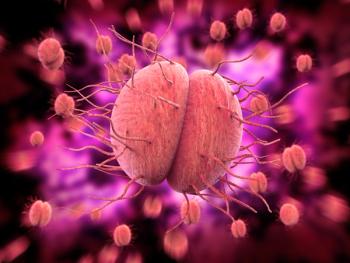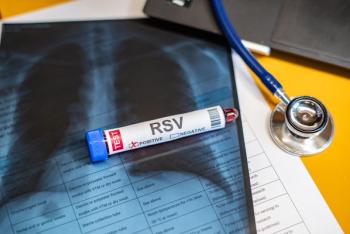
Dupilumab Improves Lung Function, Asthma Exacerbations in Children, Study Finds
Children treated with dupilumab showed improved lung function compared with placebo group, according to one study.
Children with
“This suggests that, even in children with a modest pre-bronchodilator ppFEV1 response, beneficial treatment effects with dupilumab are likely,” wrote the researchers of the study. “This sustained improvement and reduced exacerbation rate over time can be explained by the mechanism of action of dupilumab.”
This post hoc analysis is published in the
Dupilumab is a monoclonal antibody used to treat inflammatory conditions. Its targeted mechanism of action not only allows for persistent inhibition of the immune response and further mediators in the downstream cascade, but it also allows the opportunity for previously damaged tissue to be repaired and return to higher levels of function. This leads to better overall lung function and reduced asthma exacerbations.
The study included children aged 6 to 11 years diagnosed with uncontrolled, moderate-to-severe type 2 asthma who received dupilumab or placebo in the phase 3 LIBERTY ASTHMA VOYAGE (NCT2948959) study, which assessed the efficacy and safety of add-on dupilumab in children with uncontrolled, moderate-to-severe asthma.
In the phase 3 study, children were randomized to receive either dupilumab 100 mg or 200 mg once every 2 weeks or placebo every 2 weeks for 52 weeks in addition to their maintenance background medication.
To examine the relationship between changes in asthma exacerbation rates and lung function in children treated with dupilumab, the researchers aimed to measure the proportion of patients achieving clinically meaningful improvements of 5% and greater or 10% and greater in pre-bronchodilator ppFEV1 by 12 weeks. Additionally, the researchers examined annualized severe asthma exacerbation rates from Week 12 to Week 52, as well as mean change from baseline in ppFEV1 to Week 12.
A total of 350 children were included in the analysis, with 236 who received dupilumab and 114 who received placebo. At baseline, demographic and clinical characteristics of these children were generally similar across subgroups.
At Week 12, 141 (60%) children treated with dupilumab and 57 (50%) children who received placebo showed improvements of 5% and greater in ppFEV1. Additionally, 106 (45%) children treated with dupilumab and 36 (32%) children who received placebo achieved improvements of 10% and greater in ppFEV1.
Furthermore, dupilumab showed rapid and sustained improvements in ppFEV1 (3.54; 95% CI, 0.30-6.78; P = .03) in children who achieved improvements of 5% or greater compared with placebo group.
Overall, these findings suggest that dupilumab is an excellent treatment option, showing significant improvements in lung function and exacerbations in children with asthma.
“Dupilumab also significantly reduced severe exacerbation rates regardless of improvements in lung function, although stronger responses in lung function were associated with numerically lower exacerbation rates,” wrote the researchers. “This is highly relevant for individuals with type 2 asthma, specifically children, who may not show a direct significant response in ppFEV1, since treatment with dupilumab is likely to result in overall decreased exacerbations and thus increased quality of life.”
Reference
Guilbert TW, Murphy KR, Hamelmann E, et al. Impact of lung function on asthma exacerbation rates in children treated with dupilumab: The VOYAGE study. J Asthma Allergy. 2024;17:81-87
https://doi.org/10.2147/JAA.S425101
Newsletter
Stay ahead of policy, cost, and value—subscribe to AJMC for expert insights at the intersection of clinical care and health economics.












































